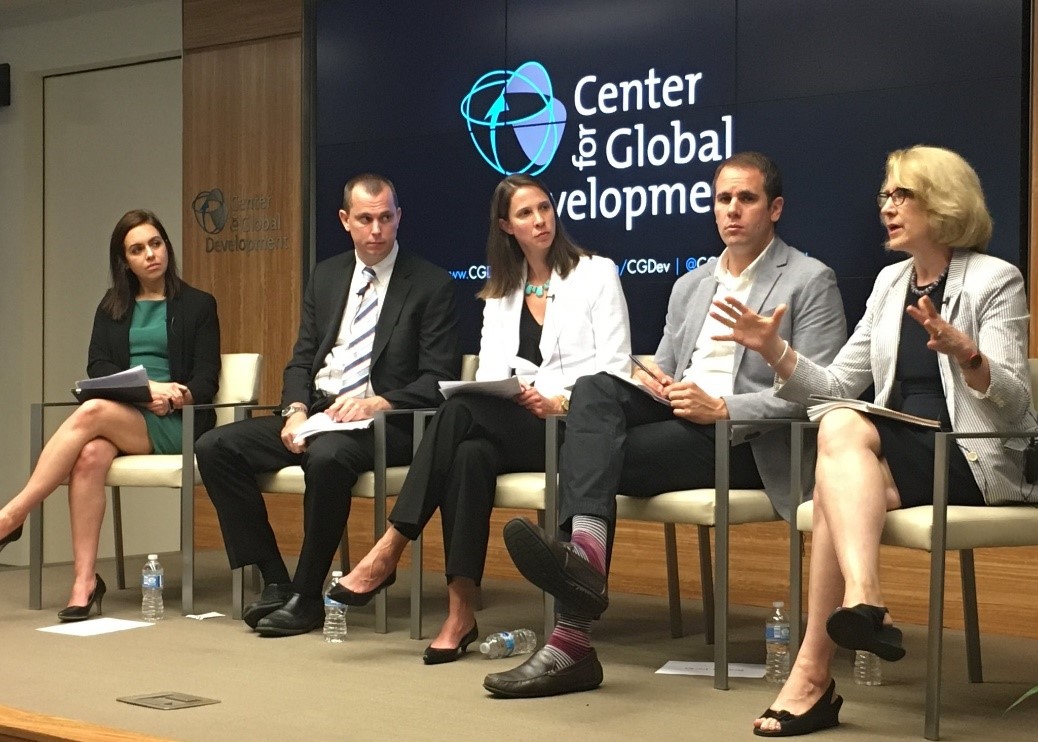America is uniquely positioned to advance a private sector-based development agenda due to our unparalleled entrepreneurial tradition, deep capital markets, and unmatched technological and innovation capabilities. Yet, existing US government policies fail to fully leverage these strengths. Even among policymakers and stakeholders, there is plenty of misunderstanding around how the US government’s premier agency charged with promoting these efforts, the Overseas Private Investment Corporation (OPIC), actually operates.
To help address this, we launched a major new research project focused on analyzing OPIC’s operations over the last fifteen years. Last week, we summarized our findings on one specific issue – whether OPIC is a boon for big American businesses. The broader agenda includes unpacking the agency’s portfolio based upon geographic regions; sectors; and the income level, financial sector depth, and risk profile of the recipient countries. However, pursuing this in-depth investigation requires access to comprehensive project-level data. That’s where we ran into a brick wall. When we searched for a database with key OPIC project-level information, we couldn’t find one. It seemingly didn’t exist.
OPIC clearly has made great strides at improving its public reporting over time. Most importantly, in 2009, the agency began releasing project-level information prior to formal Board consideration. These project summaries contain a wealth of information about the planned investment activities, expected development outcomes, and any social, labor, and environmental implications. OPIC also has an online database of active projects and releases annual reports and policy reports. The agency should be commended for these dramatic improvements in transparency.
The biggest problem with OPIC’s current reporting is that it’s piecemeal. Different information is available in different places and different formats. So, outsiders have to dig through reams of disparate data sources, making portfolio-level analysis almost impossible. Put differently, the lack of a comprehensive database prevents people interested in OPIC – including policymakers, researchers, businesses and investors, and others – from engaging with the agency in a rigorous, data-driven manner.
Well, the days of digging through thousands of pages of documents are over. We spent months manually entering all of the publicly available information on OPIC projects into a single location, the OPIC Scraped Portfolio dataset. The dataset also includes supplementary country-level data, like domestic private credit depth and commercial and political risk ratings. For more information on how we put the dataset together, please see our methodological note. The dataset is downloadable in Excel or Stata files, and we plan to keep it updated as additional information becomes available. Alternatively, you can explore the agency’s portfolio using the filters in the table below.
We’d welcome your suggestions for how to improve this data table. Our hope is that the dataset becomes a go-to resource and contributes to a much deeper and more informed understanding of OPIC’s activities.
Even with this newly accessible resource, there are still some big reporting gaps. Critical project-level information remains locked up, especially on development effects. The agency scores each prospective project on its expected development impact. However, this information is not disclosed publicly. In our new CGD paper, we did our best to create a proxy for development rating categories. But, this data is unofficial and incomplete. Moreover, OPIC does not release project-level information on actual development benefits over time, even though the agency collects this information and reports aggregated results each year.
We hear that OPIC is working hard to address these remaining deficiencies. There are still nine months before the existing management team leaves office, which is a lot of time to make significant progress. Let’s hope that the agency prioritizes progress on what matters the most – projected and actual development results. Watch this space for more. In the meantime, we encourage you to explore the new OPIC Scraped Portfolio dataset.
CGD blog posts reflect the views of the authors, drawing on prior research and experience in their areas of expertise.
CGD is a nonpartisan, independent organization and does not take institutional positions.





